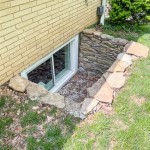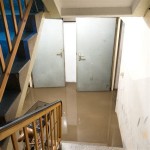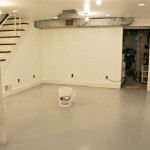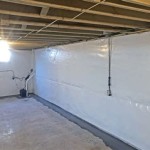Basement Flooding From Floor Drain: A Comprehensive Guide to Prevention and Remediation
Basement flooding from the floor drain can be a frustrating and costly problem. Water damage can ruin stored belongings, damage the foundation, and create a breeding ground for mold and mildew. However, by understanding the causes of basement flooding from the floor drain and taking the necessary steps to prevent it, you can keep your basement dry and safe.
Causes of Basement Flooding From Floor Drain
There are several potential causes of basement flooding from the floor drain:
- Clogged Drain: Debris, such as hair, soap scum, and dirt, can accumulate in the floor drain and block the flow of water.
- Damaged Drainpipe: The drainpipe that connects the floor drain to the sewer line may be cracked or broken, allowing water to leak into the basement.
- Improperly Installed Drain: The floor drain may not have been installed correctly, leaving gaps or leaks that allow water to seep into the basement.
- Overwhelmed Sewer System: During heavy rainfall, the sewer system may become overwhelmed, causing water to back up into the basement through the floor drain.
Preventing Basement Flooding From Floor Drain
To prevent basement flooding from the floor drain, it is important to take the following steps:
- Keep the Drain Clear: Regularly clean the floor drain to remove any debris that could clog it.
- Inspect the Drainpipe: Periodically inspect the drainpipe for cracks or damage and repair any issues promptly.
- Ensure Proper Installation: Make sure that the floor drain is installed correctly by a qualified plumber.
- Install a Backflow Valve: A backflow valve can prevent water from backing up into the basement through the floor drain during heavy rainfall.
Remediating Basement Flooding From Floor Drain
If your basement does flood from the floor drain, it is important to take the following steps to remediate the damage and prevent future flooding:
- Remove the Water: Use a pump or wet/dry vacuum to remove as much water from the basement as possible.
- Clean and Disinfect: Clean the flooded area with a disinfectant to prevent mold and mildew growth.
- Dry the Basement: Use a dehumidifier or fans to dry the basement thoroughly.
- Identify and Repair the Cause: Determine the cause of the flooding and take steps to repair or replace the damaged component.
Conclusion
Basement flooding from the floor drain can be a serious problem, but it can be prevented and remediated by taking the necessary steps. By keeping the drain clear, inspecting the drainpipe, ensuring proper installation, and installing a backflow valve, you can reduce the risk of flooding. In the event of flooding, promptly removing the water, cleaning and disinfecting the area, drying the basement, and repairing the cause can help to minimize the damage and prevent future flooding.

Sewer Backup Basement Drain Flood Causes Cyclone Valves

Basement Drain Backing Up Here S What To Do Right Now Servicemaster

Why Does My Floor Drain Back Up Structure Tech Home Inspections

Causes Of Basement Flooding Utilities Kingston

Causes Of Basement Flooding Utilities Kingston

6 Simple Ways To Prevent Basement Flooding American Dry

Basement Flooding Preparedness City Of Hamilton

How To Clean A Flooded Basement News And Events For Systems Inc

How Do You Unclog A Basement Floor Drain Atlanta Ga Plumbers

Why Do I Have Standing Water In Basement Floor Drain
See Also








